Best Orlando Treatment for a
MENISCUS TEAR
Are you not able to continue your cherished hobbies or everyday activities because of sharp pain in your knee when you move? With our expert doctors’ help, you can get to the root of your symptoms and get back to doing what you love quicker and easier.
Read More Ask A QuestionBest Orlando Treatment for a
MENISCUS TEAR
Are you not able to continue your cherished hobbies or everyday activities because of sharp pain in your knee when you move? With our expert doctors’ help, you can get to the root of your symptoms and get back to doing what you love quicker and easier.
Read More Ask A QuestionHere Is Everything You Need To Know About A Meniscus Tear, What Causes It, and The Best Way to Treat It
Click the tabs below to get direct answers to your questions
What is a meniscus tear?
The meniscal tear is a common injury. It can affect athletes who play individuals and team sports. It’s also common in people who have jobs that require lots of squatting, such as plumbers or coal miners. Your physical therapist can help you manage the injury and, if surgery is required, can help you prepare for the procedure and recover your strength and movement afterward.
What are common causes of a meniscus tear?
The meniscus is a rubbery, C-shaped piece of cartilage that cushions your knee. Each of your knees has 2 menisci (plural of meniscus); one on the inner (medial) part of the knee, and the other on the outer (lateral) part. Together they act to absorb shock and stabilize the knee joint
Where does it hurt?
In most cases of meniscus tears, patients will complain of pain on the inside or outside part of the knee. To be specific, the pain will be right along the joint line where the meniscus is. You may also experience knee tightness due to the swelling inside the knee. But, in complex meniscus tear cases, patients can report can inside knee pain. Because of this, it’s possible to feel the pain in other parts of your body. This is called referred pain. Understanding the root cause of your pain is fundamental to treating your pain in the long run & will decrease your dependence on painkillers or treatment that only addresses the symptoms.
What are common symptoms of a meniscus tear?
When you tear a meniscus, you might:
- Feel a sharp, intense pain in the knee area
- Feel a “pop” or a tearing sensation
- Have difficulty walking because of pain or a “catching” sensation
- Have difficult straightening the knee
- Experience swelling within the first 24 hours of injury
To Get A "Insider's Look" At Our Treatment Approach And How We Get Results...
Click Below To Watch Our Exclusive Webinar! It's Simple, Short, and It's Free!

- Learn The Essential First Step... So You Can Get Pain Free Again
- See Why Treatment Needs To Be Individualized, Not Standardized...So You Get Faster Results!
- Learn How You Can Save Money...So You Don't Have To Waste $1000's On Unnecessary Treatments
To Get A "Insider's Look" At Our Treatment Approach And How We Get Results...
Click Below To Watch Our Exclusive Webinar! It's Simple, Short, And It's Free!

- Learn The Essential First Step...So You Can Get Pain Free Again
- See Why Treatment Needs To Be Individualized, Not Standardized...So You Get Faster Results
- Learn How You Can Save Money...So You Don't Have To Waste $1000's On Unnecessary Treatments
Can a meniscus tear be treated?
Yes, meniscus tear knee pain can be treated and with great results. Even better, many times it can be treated conservatively without needing injections, pain medications, or surgeries if you can address it early enough. Major tears and bucket handle tears may need surgery to fix, but most non-traumatic meniscus tears can recover well if treated correctly. The key to treatment is to solve the root cause of your pain so you can get the best results and a long-term outcome.
Some root causes of meniscus tear knee pain can be:
- Decreased hip range of motion
- Poor posture in sitting causing hip tightness
- Hip arthritis and labral tear
- Weak hip and glute muscles
- Overload to knee joint
- Poor lifting and running biomechanics
- Hip flexor problems
- Leg length discrepancy
- Previous leg or hip injury
- Tight low back and hip joints
- Poor biomechanics with sports
- Trigger points in hip and thigh muscles
- Lack of ankle range of motion
If you have failed multiple treatment approaches already, your clinician missed the real root cause of your pain and was just chasing the symptoms. The pain or symptom is the effect, not the cause. What do I mean by this? Say your fire alarm goes off in your house. Its purpose is to protect you and make you aware that something is wrong, i.e., that there is a fire in your house. The “alarm” is like your pain (your body’s way of telling you something is wrong) and the “fire” is the root cause. When the fire alarm goes off, you don’t run upstairs and just turn it off, right? You run through the house with the fire extinguisher, trying to find the room where the fire is at. You try to find out what caused the alarm to go off so you can put it out. Once the fire is out, then the fire alarm can go off. Solve the “root” cause of your pain, and then the pain (“the effect”) eventually goes away.
Additionally, there is a common root cause which many clinicians misdiagnose. They treat the knee pain with a cookie cutter approach, hoping it will work and treat it as a simple muscle problem. They tend to rely on stretching, ultrasound, massage and focus treatment directly on the knee joint. However, often the root cause is missed and the symptoms return. If you have failed multiple treatments and still have knee pain, then maybe it’s not just a knee problem? There is probably something else adjacent to the knee, like the hip or ankle, that is overloading or stressing the knee to cause your pain. Other neighboring joints can influence your primary complaint area causing your pain. So many healthcare clinicians treat pain like this and thus show poor treatment outcomes which results in the pain coming back. Why? They missed the root cause of your knee pain. This is also the case when patients turn to injections, nerve blocks and other surgeries which are still not effective because the actual problem still is not solved, their treatment was just chasing the pain.
The first step in treatment is to identify the root cause of your pain. A specific and individualized treatment approach for your type of pain can lead to a successful outcome for you and resolve your symptoms for the long term. This is why you can’t rely on a standard cookie cutter approach; you need a customized and individualized treatment approach specifically for your type of meniscus tear knee pain.
What happens if it goes untreated?
Minor case – If it is a minor case of meniscus tear knee pain, research shows that many acute cases of pain may spontaneously go away in 4-8 weeks. The key to prevent from becoming a more severe chronic case is to solve the root cause of the knee pain and determine what actually is causing it. Many times, it’s not really a knee pain problem and the cause is somewhere else. Or, the meniscus tear is a false positive, meaning you had the tear prior to experiencing knee pain. But who wants to wait 8 weeks to get pain free? Let’s try to solve the root cause of your pain in 2-3 weeks and address all of the risk factors present (so it never returns!) and get you back to your favorite activities faster! We still recommend that you get it checked out by one of our board-certified physical therapists to ensure that it is just a minor case, to solve all risk factors, and to get the optimal outcome in the fewest visits needed. Most minor cases resolve on their own in time or get better with some stretching and strengthening. But, the sooner you take action, the sooner you are pain-free. (And research supports this!)
Severe case – If it’s more of a severe and chronic case of meniscus tear knee pain, your pain will probably start to worsen and increase because the root cause and underlying risk factors of the pain are not being treated. Big tears will require surgery to fix, but many conservative treatments show the same long-term outcomes as surgeries. Many people turn to pain medication and injections at this time but this only blocks the pain for short term. You may not feel the pain when taking pain medications, but the underlying problem is still there. Many people say after the pain medication and injection wears off, then usually the pain returns and sometimes it returns even worse. This is when you experience knee pain while sitting and pain walking up and down stairs. If the knee pain continues to worsen, you may start experiencing difficulty walking, be unable to run or golf, and you may get sharp knee pain. Once the root cause is addressed, then we can start decreasing your pain, regardless of how chronic and severe the pain is. This is the crucial first step. It just may take more time to recover from a chronic case. Usually with chronic and severe cases, the longer you have your pain and injury, the longer it takes to resolve. If all conservative treatments have been exhausted you may need to consult with an orthopedic surgeon to see if surgery is the best treatment option for you.
What outcome can you expect from treatment?
As we’ve discussed, the first step is to solve the root cause of your meniscus tear pain. This is the most essential step to plan a treatment specialized for you and your unique type of pain. Your root cause will guide your treatment and dictate what is the best way to treat your pain. This, along with identifying risk factors that may be predisposing you to have your pain and injury, will allow you to start getting pain free again. The next step is to start decreasing pain, modifying activities, and start addressing all of the impairments causing your pain which we discovered during your evaluation. With each session, pain should start to decrease and you should start to regain range of motion with less pain and symptoms. Any radicular and referred pain should resolve fast as well. At this point, we begin light and basic strengthening only if it does not increase pain. Treatment will consist
The next step is to achieve full range of motion, (which should correlate to being
To Get A "Insider's Look" At Our Treatment Approach And How We Get Results...
Click Below To Watch Our Exclusive Webinar! It's Simple, Short, and It's Free!

- Learn The Essential First Step... So You Can Get Pain Free Again
- See Why Treatment Needs To Be Individualized, Not Standardized...So You Get Faster Results!
- Learn How You Can Save Money...So You Don't Have To Waste $1000's On Unnecessary Treatments
To Get A "Insider's Look" At Our Treatment Approach And How We Get Results...
Click Below To Watch Our Exclusive Webinar! It's Simple, Short, And It's Free!

- Learn The Essential First Step...So You Can Get Pain Free Again
- See Why Treatment Needs To Be Individualized, Not Standardized...So You Get Faster Results
- Learn How You Can Save Money...So You Don't Have To Waste $1000's On Unnecessary Treatments
How is it diagnosed?
Your physical therapist will:
- Conduct a thorough evaluation that includes a detailed review of your injury, your symptoms, and your health history
- Perform special tests to measure the range of motion (amount of movement) in your knee and determine which specific movements and positions increase your symptoms
- Use a series of tests that apply pressure to the meniscus to determine whether it appears to be damaged
The results of these tests may indicate the need for further diagnostic tests—such as ultrasound or magnetic resonance imaging—or a referral to an orthopedic surgeon for consultation.
Do you need an X-ray and MRI imaging for meniscus tear pain?
For most common orthopedic cases, imaging is not needed and the diagnosis can be made with a simple physical therapy evaluation. No need to waste thousands of dollars on unwarranted diagnostic imaging. We also have clinical tests which we can perform to help rule in and rule out pathologies that correlate to MRI findings (which is WAY cheaper than an MRI!). An expensive MRI may just tell us what we already know. Also, often times the positive findings found on x-rays, MRIs, and EMGs may not actually be the root cause of your pain. What does that mean? Many positive findings on an MRI are also found in asymptomatic (pain-free) individuals, so diagnostic imaging may not be able to tell us what is actually causing your pain. For example: many people have a herniated disc in their low back but do not have any low back pain. So if herniated discs can cause no pain, just because someone with low back pain has a herniated disc does not mean that is what’s causing their pain. The key is to find out if your clinical evaluation findings during your evaluation at Pursuit match the MRI findings. If so, then we can decide what is the best way to treat it.
How can a Physical Therapist treat it?
Your doctor may diagnose a torn meniscus, but meniscal injuries can often be managed without surgery. A short course of treatment provided by a physical therapist can help determine whether your knee will recover without surgery. The physical therapist plays an important role by controlling pain and swelling and by restoring full strength and mobility to your knee
As you recover, your therapist will advise you on ways to maintain your fitness and activity level and will help you decide when you are ready to return to full activity.
If You Need Meniscus Surgery
Patients with more serious meniscal tears, or those that don’t respond to a course of physical therapy, may need surgery. Surgically removing the torn cartilage (a procedure called a
Meniscus Removal
Following a simple
Meniscus Repair
Sometimes the surgeon will decide that the torn meniscus can be repaired, instead of removed. Research studies show that if a meniscal repair is possible, the long-term outcome is better than removal because the repair can reduce the risk of arthritis later in life.
Rehabilitation following a meniscal repair is slower and more extensive than with removal because the repaired tissue must be protected while it is healing. The type of surgical technique performed, the extent of your
After a meniscal repair, your physical therapist will help you control pain and swelling, help restore your strength, and help you regain full motion to the knee as soon as it is safe to do so. You’ll have a program of exercises to do at home, and this program will be advanced as you improve. A brace may be used to help protect the repaired meniscus during the recovery phase. These braces usually allow you to fully straighten the knee but will limit your ability to bend it all the way, in order to prevent stress to the repair.
Returning to Activity
Whether your torn meniscus recovered on its own or required surgery, your physical therapist will play an important role in helping you return to your previous activities. Your therapist will help you learn to walk without a limp and go up and down stairs with ease.
If you have a physically demanding job or lifestyle, your therapist can help you return to these activities and improve how you do them.
If you are an athlete, you may need a more extensive course of rehabilitation. Your therapist will help you fully restore your strength, endurance, flexibility, and coordination to help maximize your return to sports and prevent reinjury. Return to sports varies greatly from one person to the next and depends upon the extent of the injury, the specific surgical procedure, the preference of the surgeon, and the type of sport. Your therapist will consider these factors when progressing your rehabilitation program and will work closely with your surgeon to help decide when it is safe for you to return to sports and other activities.
How long does it take for recovery?
Recovery time for meniscus tear pain depends on multiple factors:
- The severity and chronicity of your pain
- Whether your pain is an easy or complex case
- If the root cause of your pain was solved or if it was missed (this is the key to getting a great recovery!)
- How long you have been in pain for and when you need to be pain-free by
- Other therapies and treatments you have tried
- Which medical professional(s) you saw prior to seeing us
- How active you are in trying to resolve your pain
- Which treatment approach is chosen and if it is proven to work for your pain
There are many factors that influence your recovery time and every patient’s recovery time is different. If you do nothing and don’t pursue treatment, it could gradually get better on its own, you could continue to have the same pain persist, or it could continue to get worse. As stated earlier, most acute cases may or may not resolve in 4-8 weeks. If you get expert treatment that solves the root cause of your pain, some cases resolve in 1-3 weeks! Then you can get back to sports, exercise, and your favorite activities without flare-ups and recurrences. Some of our patients are pain-free in 1-3 visits and back to 100% in 2 weeks!
If it is a complex case with chronic pain, your recovery may take longer, but you can still get a good outcome. Some chronic cases can resolve as fast as 2 months but can take as long as 4-6 months. It varies with every patient because every case of meniscus tear pain is different. Every patient’s recovery varies depending on the factors listed above. After a thorough evaluation here at Pursuit Physical Therapy, you will know your exact timeline of recovery, your prognosis, and when you should reach your goals.
How much does it cost?
The average cost of care for a case of spine pain in the US is $1800-$6600. This high price is due to many factors: the over-inflated cost of healthcare, the over expensive cost of unwarranted imaging (x-rays, CT scans, and MRIs) that is not needed, over-utilization of care (which increases the number of visits needed to be treated, requiring multiple visits to different doctors and physical therapists for the same diagnosis), and getting billed for unnecessary and unproven treatments that you don’t even need. All of these factors increase cost and this is why healthcare is so expensive. We strive to end that unnecessary, expensive cycle. In fact, we are currently publishing our first-year data with the University of Central Florida that shows the cost-effectiveness of our treatment approach.
This year, the average cost of our care was shown to be $814-$1141. Some of our patients get even as low as $315 for the full treatment! So if you have a deductible of $3,000-$10,000 and you have to pay out of pocket for your treatment, we can save you lots of money.
Remember, every case of pain is different and not all knee pain is the same. It is hard to predict exactly how much your treatment is going to cost you. But after a thorough evaluation, we can tell you exactly what is causing your pain, how long it is going to take, what the best way to treat it will be, and exactly how much it is going to cost. We have no hidden fees, no co-pays, and no miscellaneous bills that you will be surprised by 3 months after you receive treatment. Your pain, your diagnosis, your goals, and what is best for you dictate your treatment and how much it will cost, and while it varies for every patient, treatment at Pursuit is still much more affordable than standard healthcare.
How long are sessions?
Our evaluations are always one-on-one with one of our board-certified specialists and 60-90 minutes long. We like to perform thorough evaluations so we can solve the root cause of your pain, identify all risk factors, and make sure that we do it right. After the evaluation, you will know your diagnosis, the root cause of why you have your pain and symptoms, your prognosis, an expected timeline of when you should see results, what the best way to treat your pain is, how much it will cost, and your expected recovery outcome. We want you to fully understand everything about your pain and injury. What is best for you and will get you the best outcome is what will dictate your care and treatment. There will be plenty of time for you to ask questions so we can make sure you fully understand why you have your pain and what the best way to treat it will be. After the evaluation is completed, all treatment sessions are 60 minutes going forward and still one-on-one with your physical therapist. You and your physical therapist will design a customized treatment plan that works for you and that will achieve your goals.
How can it be prevented?
There is little research at this time to support exercise or other interventions such as bracing for
- Regular exercise helps strengthen the muscles that support your knees.
- Staying physically active helps prepare your body for the demands of a sport or strenuous activity.
- Although accidents are difficult to prevent, avoiding twisting or turning quickly while your foot is planted may help prevent meniscal tears.
If you already have knee problems, your physical therapist can help you develop a fitness program that takes your knees into account. Some exercises are better than others for those with a history of knee pain. Many exercises can be modified to fit your specific needs. For example, when performing exercises that include squatting, it’s important to make sure that your knee stays directly over your foot and doesn’t twist or bend excessively.
What are the next steps?
Getting started is simple. The first step and the key to getting you pain-free again
Solve the root cause of your pain
How Our Treatment is Different
We believe that working with a specific specialist for your care is the best way to solve the root cause of your pain. Work one-on-one with a Doctor of Physical Therapy every time your visit our office.
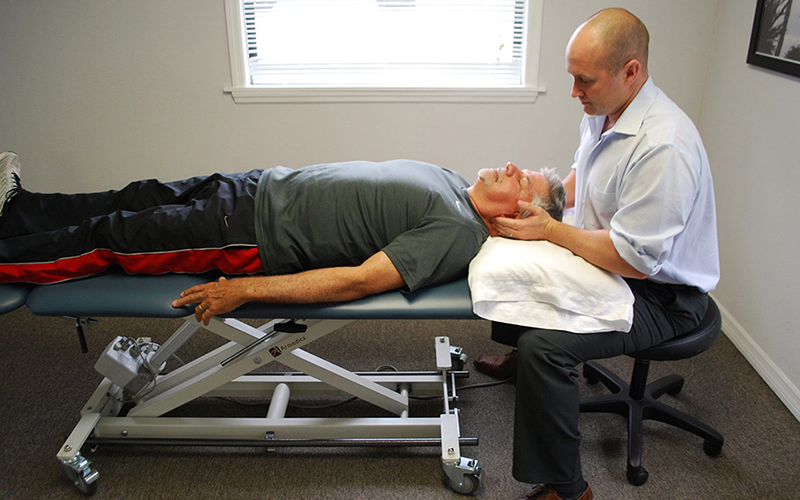
Exclusive one-on-one patient care
While most clinics will give you a limited amount of time with your Doctor, we believe that true results come from consistent one-on-one therapy.
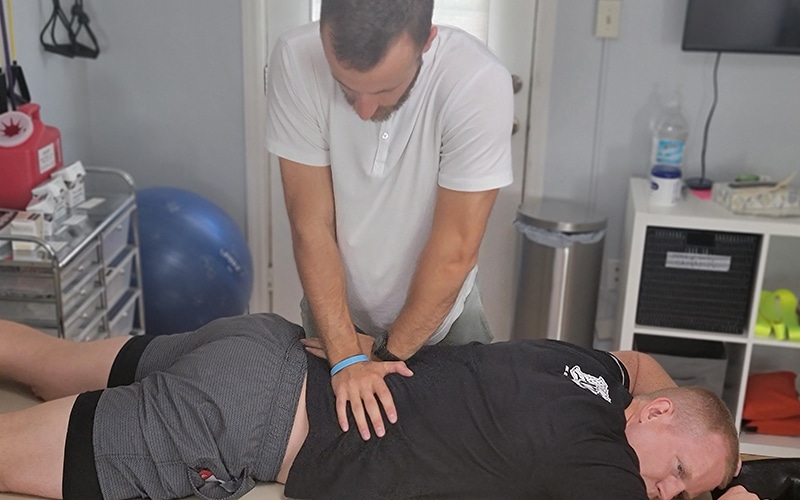
Work with your specialist every visit
Stop being handed off to trainees or non-Doctors for your Physical Therapy. At Pursuit, you'll work exclusively with your Doctor of Physical Therapy that specializes in your specific needs.
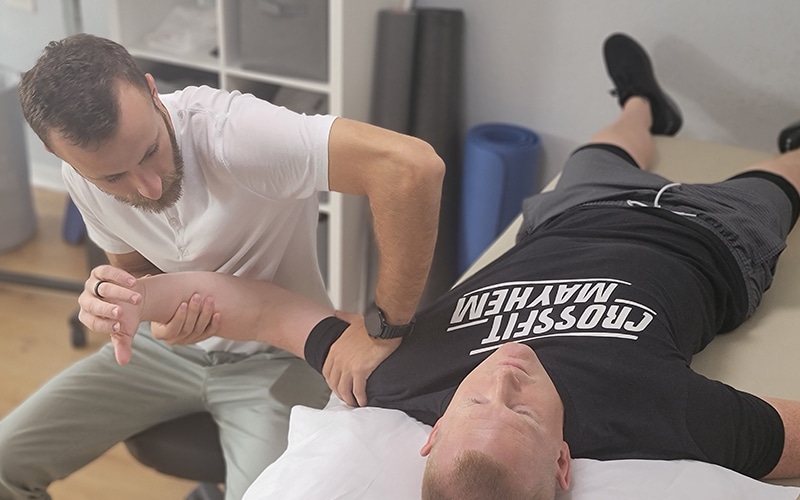
24/7 messaging access to your specialist
Ever have an issue or questions? We're here to help. Get 24/7 access to your specialist while you're under our care. Physical Therapy doesn't just happen when you're in our clinic, so we're here for you when you need us.
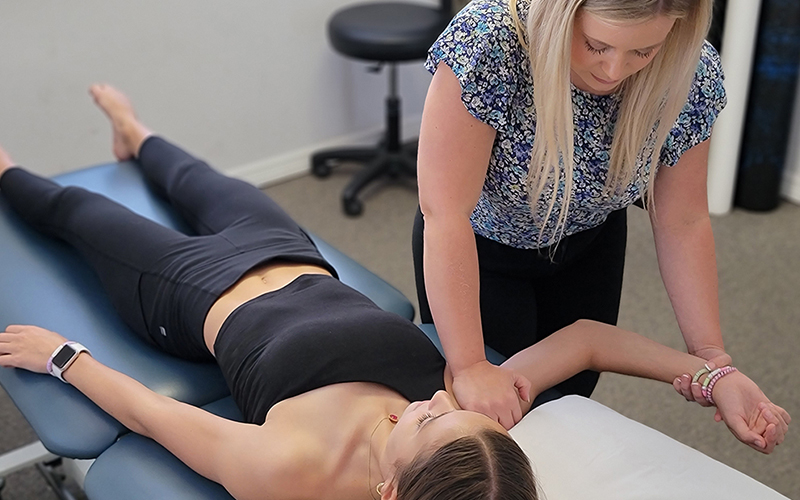
No waiting periods
Get off that waiting list and get the treatment you need. We're always ready to accept new patients, so you can get better faster and get back to a pain-free life that you deserve.
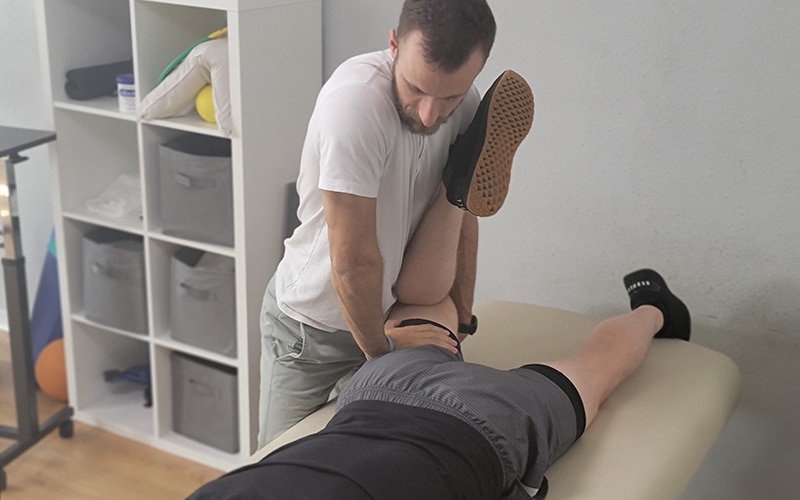
Not limited by insurance
Don't let the insurance companies tell you how much treatment you need. Avoid the limitations of short sessions that insurance provides and work with our Doctors when you need it and for as long as you need it.
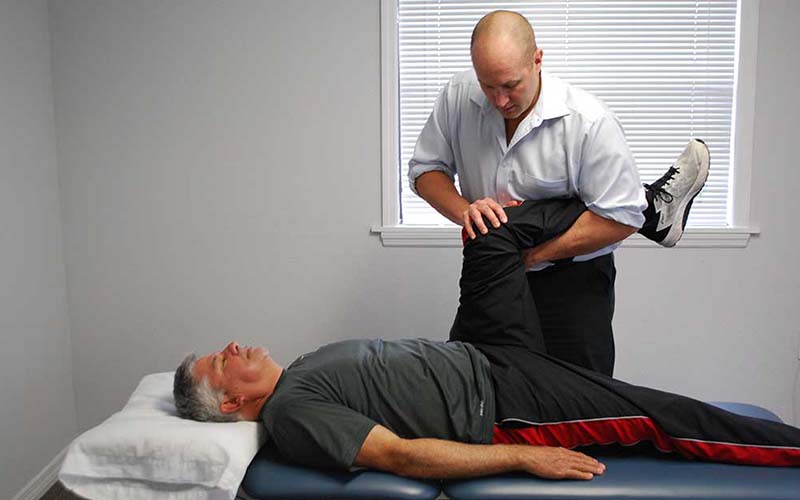
No painful injections, no expensive medications, no surgery
In order to truly solve your pain, we use a holistic approach to Physical Therapy, not relying on injections, medications, or surgery. Instead, we'll strengthen your body's weak points that are causing your pain.
MEET THE TEAM

RON MILLER, DPT, OCS, Cert DN
Doctor of Physical Therapy | Board Certified Orthopaedic Physical Therapy Clinical Specialist | Post-Doctoral Orthopaedic Residency Trained | Certified in Dry Needling | Titleist Performance Institute Certified
Dr. Ron Miller is the owner and founder of Pursuit Physical Therapy. His core belief is that it is not about the physician, the physical therapist, or the insurance company: it is about what is truly best for the patient. Dr. Miller started...

CAREY ROTHSCHILD, DPT, OCS, SCS, CSCS, CKTP
Doctor of Physical Therapy and Assistant Professor at the University of Central Florida | Board Certified Orthopaedic Clinical Specialist
| Board Certified Sport Clinical Specialist
Dr. Carey Rothschild is an Assistant Clinical Professor in the Doctor of Physical Therapy Program at the University of Central Florida. Dr. Rothschild earned a Bachelor of Health Science in Physical Therapy in 1999 from the University of Florida and a Doctor of Physical Therapy from Boston University in 2005...


MICHAEL FABRICK, DPT, Cert. DN
Doctor of Physical Therapy | Certified in Dry Needling | Pursuit Sports Performance Specialist | Professional Tennis Tour Physical Therapist
Dr. Michael Fabrick was born and raised in Hanover, Pennsylvania and attended Slippery Rock University where he received his Bachelor’s degree in Exercise Science. He then went on to receive his Doctorate Degree in Physical Therapy in May of 2020. During his final tenure as a Doctoral intern, he trained underneath Todd Ellenbecker, who is one of the world’s leading experts on shoulder rehabilitation and is the Vice President of Medical Services for the ATP World Tour...

MARYANN DANIELS, PT, MCMT, IDN
Physical Therapist | Dry Needling Certified | Mastery Certified In Manual Therapy | Pelvic Floor And Post Partum Specialist
Maryann was originally born in Connecticut but moved to Florida with her family at the age of 9 and she grew up in Jupiter, Florida. She then went to college at the University of Central Florida...

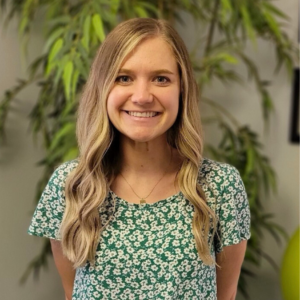
Kayla Cook, DPT, HSP, CSCS
Doctor of Physical Therapy | Hesch Sacroiliac Practitioner | Certified Strength And Conditioning Specialist | Ehlers-Danlos Syndrome Specialist | Volleyball Specialist
Dr. Kayla Cook was born and raised in Northern California and received her undergraduate degree in Kinesiology from California State University in Sacramento. She then received her Doctorate in Physical Therapy from The University of St Augustine for Health Sciences...
BECOMING PAINFREE IS EASIER THAN YOU THINK

Step 1:

Step 2:


 Beth S.
Beth S. Lisa B.
Lisa B.